Compression Fracture from a Car Accident in Ontario, Canada
Compensating Compression Fractures From a Car Accident in Ontario, Canada
Suffering a compression fracture from an auto accident can be debilitating and life-altering. It is important to understand that if you have been damaged in a car accident, you may be entitled to compensation for your medical expenses, lost wages, strain and suffering and other damages resulting from the collision.
This webpage will explain a compression fracture and how it is treated and compensated for after an automobile accident in Ontario. We will also provide tips on maximizing your settlement after such an incident. Finally, we will discuss the legalities of getting fair compensation following a car crash with such serious injuries as a compression fracture.
- Cause and Types of Compression Fractures From Car Accidents in Ontario?
- Symptoms of a Compression Fracture After a Car Accident in Ontario?
- Treatment for Compression Fractures After a Car Accident in Ontario?
- Steps to Prevent a Compression Fracture Due To a Car Accident in Ontario?
- Compensation for Compression Fractures from a Car Accident in Ontario?

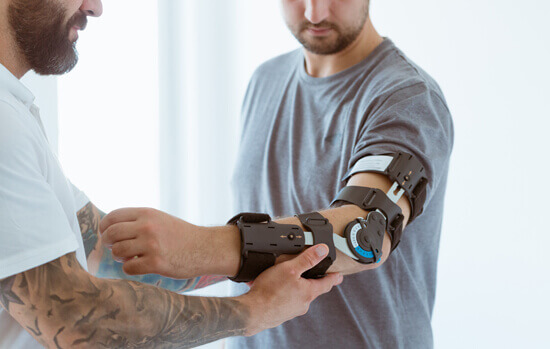
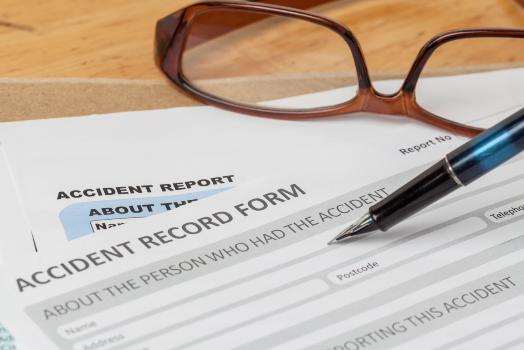
Compression Fracture From a Car Accident in Ontario, Canada
Cause and Types of Compression Fractures From Car Accidents in Ontario, Canada
A compression fracture is a kind of bone fracture that can occur when one or more vertebrae in the spine collapse or become compressed due to excessive force or trauma. This type of cracking is most commonly caused by direct trauma, such as an automobile accident.
While the likelihood of a compression fracture depends on different factors, such as the speed and nature of the accident, certain circumstances can contribute to this type of injury.
- High-speed collisions: Car accidents involving high speeds can generate substantial force and impact. The abrupt deceleration caused by a high-speed crash can place immense pressure on the spine, making it more susceptible to compression fractures.
- Rear-end collisions: In a rear-end collision, the vehicle’s occupants that are struck from behind may experience a rapid forward movement of their bodies. This sudden jolt can cause the spine to forcefully bend forward, potentially leading to compression fractures in the vertebrae.
- Rollover accidents: Rollover accidents involve the vehicle flipping or rolling over. During such incidents, occupants may be subjected to multiple impacts as the car collides with the ground or other objects or rolls onto its roof. The repetitive nature of these impacts can increase the risk of compression fractures in the spine.
- Seat Belt-related injuries: While seatbelts are essential for restraining occupants and reducing the risk of severe injuries, they can contribute to compression fractures in certain cases. Suppose the seatbelt is worn incorrectly or is inadequately adjusted. In that case, it may apply excessive force to the spine during a collision, potentially resulting in a compression fracture.
- Side-impact collisions: Side-impact or “T-bone” collisions can exert a significant lateral force on the vehicle and its occupants. When a car is struck from the side, the immediate impact can cause the spine to twist or bend unnaturally, potentially resulting in compression fractures.
- Collisions involving Large Vehicles: Accidents involving larger vehicles such as trucks or buses can increase the risk of compression fractures. The sheer size and weight disparity between the cars involved can lead to more severe forces being applied to the occupants’ spines during the collision.
- Head-on Collisions: In head-on collisions, the impact force is concentrated on the front of the vehicles. This type of accident can result in a rapid deceleration of the car, causing a significant force to be transmitted through the occupants’ spines and potentially leading to compression fractures.
- Defective Safety Features: While modern vehicles are equipped with various safety aspects, such as airbags and reinforced frames, improperly installed or defective safety mechanisms can fail to adequately protect occupants during a collision. If these safety features do not function as intended, the risk of compression fractures and other injuries may increase.
- Age-Related Factors: Age can play a role in the likelihood of compression fractures resulting from car accidents. Older individuals may have decreased bone density and strength, making their spines more vulnerable to fractures even with less force. Conditions such as osteoporosis can further increase the susceptibility to compression fractures.
- Improperly Adjusted Headrests: Inadequately adjusted headrests in vehicles can contribute to the occurrence of compression fractures. Suppose the headrest is positioned too low or too far from the head. In that case, it may not adequately support the neck and spine during a collision, increasing the risk of injury.
Moreover, compression fractures can be categorized into three main types based on the specific characteristics of the fracture.
These types are:
- Wedge Fracture: A wedge fracture is the most common compression fracture. It occurs when the front part of the vertebral body collapses or becomes compressed, leading to a wedge-shaped deformity. The height of the front part of the vertebra is reduced, while the back part remains relatively intact. Wedge fractures can result from excessive force or trauma during a car accident, such as the impact of a collision or sudden deceleration. These fractures can cause pain, loss of height, and a change in the curvature of the spine.
- Crush Fracture: Crush fractures are characterized by the collapse of the entire vertebral body, resulting in a flattened appearance. Unlike wedge fractures, both the front and back parts of the vertebra are affected, leading to a loss of overall vertebral height. Crush fractures can occur when significant force is applied to the spine, such as in high-speed collisions or accidents involving heavy vehicles. These fractures can cause severe pain, limited mobility, and spine instability.
- Burst Fracture: A burst fracture is a more severe compression fracture where the vertebral body shatters or explodes into multiple fragments. This type of fracture involves both the front and back parts of the vertebra, and the pieces may displace or spread into the surrounding spinal canal. Burst fractures are often caused by high-energy trauma, such as high-speed accidents or fall from significant heights. These fractures can lead to severe pain, neurological complications, and potential damage to the spinal cord.
It’s important to note that the specific type and severity of a compression fracture can vary depending on the individual circumstances of the car accident, including the forces involved, the position of the occupant, and the overall health of the spine. A thorough evaluation by a medical professional, including imaging tests such as X-rays or MRI scans, is necessary to accurately diagnose the type and extent of the compression fracture.
Suppose you or someone you know has been involved in a car accident in Ontario, and there are concerns about a compression fracture or any other injury. In that case, it is crucial to seek immediate medical attention.
A certified healthcare professional can provide a thorough evaluation, accurate diagnosis, and appropriate treatment based on individual circumstances and needs. Moreover, you can contact a compression fracture injury lawyer to discuss your settlement options in Ontario.



Compression Fracture From a Car Accident Compensation in Ontario, Canada
Symptoms of a Compression Fracture After a Car Accident in Ontario, Canada
Experiencing a compression fracture in Ontario, or any other location, can impact an individual’s health and well-being. Understanding the potential lasting consequences of a compression fracture is crucial for individuals who have sustained such an injury.
It’s important to note that the following information is general, and specific outcomes may vary depending on individual circumstances.
- Chronic Pain: Chronic pain is one of the primary lasting impacts of a compression fracture. The fracture can cause persistent discomfort in the affected area, which may range from mild to severe and can be exacerbated by movement or certain activities. Chronic pain can significantly impact an individual’s quality of life, limiting their mobility, affecting sleep, and leading to emotional and psychological distress.
- Loss of Height and Kyphosis: Compression fractures can result in a loss of vertebral height, leading to a decrease in overall size. As multiple compression fractures occur or worsen, it can result in a condition called kyphosis. Kyphosis refers to an excessive forward curvature of the upper back, leading to a stooped or hunched posture. This can affect an individual’s appearance, cause discomfort, and limit mobility.
- Spinal Instability: In some cases, compression fractures can cause instability in the spine. When the vertebral body collapses or becomes weakened, it can impact the overall integrity and alignment of the spine. Spinal instability may require additional medical intervention, such as using spinal braces or, in severe cases, surgical procedures to stabilize the affected area.
- Neurological Complications: There is a risk of neurological complications in more severe compression fractures, especially burst fractures. Fragments of the fractured vertebrae can displace or impinge on the spinal cord or nerves, potentially leading to neurological deficits. These complications can include weakness, numbness, tingling, or paralysis in the affected body areas.
- Functional Limitations: Depending on the location and severity of the compression fracture, individuals may experience functional limitations. This can include difficulties with activities of daily living, such as walking, bending, lifting, and carrying objects. These limitations can have a significant impact on independence and overall functioning.
- Emotional and Psychological Effects: Sustaining a compression fracture can have emotional and psychological effects on individuals. Chronic pain, changes in appearance or mobility, and limitations in daily activities can lead to feelings of frustration, sadness, or anxiety. Individuals must receive appropriate emotional support and counselling to address these potential impacts.
- Breathing difficulties: In rare instances where compression fractures cause significant collapse or displacement of the vertebral body, breathing difficulties may occur. Severe compression fractures that affect the thoracic spine can compress the lungs, leading to respiratory symptoms such as shortness of breath or difficulty breathing deeply.
A compression fracture resulting from an accident can vary in severity. Mild fractures may cause localized pain, while moderate fractures can lead to more significant pain and functional limitations. Severe fractures involve extensive damage and potential spinal instability or neurological complications.
Prompt medical attention is crucial to assess the seriousness of the fracture and develop an appropriate treatment plan. Long-term impacts may include chronic pain, loss of height, and functional limitations. Consulting with a healthcare professional is essential for accurate diagnosis and personalized guidance.
It’s important to note that some compression fractures may be asymptomatic, especially in cases where the fracture is mild or has no associated complications. However, if any of these symptoms are present or if there are concerns about a compression fracture resulting from an accident in Ontario, it is crucial to seek medical attention promptly.


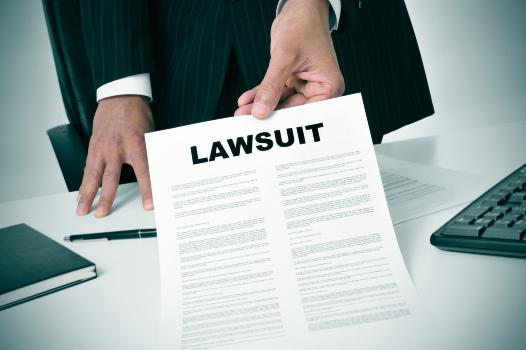
Compression Fracture Car Accident Settlement in Ontario, Canada
Treatment for Compression Fractures After a Car Accident in Ontario, Canada
Treating compression fractures after a car accident in Ontario may involve a combination of conservative management and, in some cases, surgical intervention. The certain treatment approach will depend on the fracture’s severity, complications, and the individual’s overall health.
Here are some common treatment options:
- Pain management: Pain medication, such as over-the-counter analgesics or prescribed pain relievers, may be used to manage discomfort associated with compression fractures. Sometimes, the healthcare professional may recommend stronger pain medications or muscle relaxants to alleviate pain and improve comfort.
- Rest and activity modification: Resting and avoiding activities that exacerbate pain or strain the spine is often recommended. Limiting activities that involve bending, lifting heavy objects, or excessive twisting can help prevent further damage and promote healing.
- Bracing or orthotics: Wearing a back brace or orthotic device can provide support and stability to the spine, promoting proper alignment and reducing pain. Bracing may be recommended for a specific period to allow the fracture to heal and prevent further injury.
- Physical therapy: Physical therapy plays a crucial role in the rehabilitation process. A qualified physical therapist can design an exercise program tailored to the individual’s needs, focusing on strengthening the muscles that support the spine, improving flexibility, and enhancing overall function. Physical therapy can also help improve posture and alleviate pain.
- Vertebroplasty or kyphoplasty: In cases of severe pain or when conservative measures are ineffective, minimally invasive procedures like vertebroplasty or kyphoplasty may be considered. These procedures involve injecting bone cement or using a balloon-like device to restore vertebral height and stabilize the fracture.
- Surgery: Surgical intervention is typically reserved for severe compression fractures with neurological complications, spinal instability, or persistent pain that does not respond to conservative treatment. Surgery aims to stabilize the spine, realign fractured vertebrae, and relieve pressure on nerves or the spinal cord. Different surgical techniques may be employed depending on the individual’s specific needs.
Here’s a general guide on what you can do if someone experiences a fracture:
- Ensure Safety: The first priority is to ensure the safety of the injured person and yourself. Move the person to a safe location away from immediate danger, such as traffic or falling objects. If necessary, call for emergency medical assistance by calling the emergency services number in your area.
- Assess the Situation: Assess the situation and determine the extent and type of fracture. If there is an open fracture (where the bone breaks through the skin) or if the injured person is experiencing severe bleeding, it’s crucial to control the bleeding immediately. Apply direct pressure to the wound using a clean cloth or clothing, if available. Avoid moving the injured limb unless necessary to prevent further injury.
- Stabilize the Fractured Area: If it’s necessary to move the person, try to stabilize the fractured area to minimize movement and reduce the risk of further injury. If a splint or immobilization device is available, gently support the injured limb or area. Use soft paddings, such as clothing or towels, to provide support around the fracture site.
- Minimize Pain and Swelling: To help alleviate pain and reduce swelling, apply ice packs or cold compresses wrapped in a cloth to the affected area. This can be done for about 15-20 minutes at a time, with rest intervals in between. Avoid applying ice directly to the skin to prevent frostbite.
- Seek Medical Attention: Fractures require proper medical evaluation and treatment. Call for professional medical assistance or immediately transport the person to the nearest emergency department. It’s important to let medical professionals assess the fracture, provide appropriate pain management, and determine the best course of treatment.
- Comfort and Reassurance: While waiting for medical help to arrive, provide comfort and reassurance to the injured person. Help victims stay calm and comfortable, and reassure them that medical assistance is on the way. Please encourage them to breathe slowly and deeply to help manage any pain or anxiety.
Remember, the steps above are general guidelines and should not replace professional medical advice. Each situation is unique, and it’s crucial to consult with healthcare professionals to properly diagnose, treat, and manage fractures resulting from accidents.
Additionally, it’s important to prioritize your safety and well-being when providing assistance. Suppose you need more clarification or are uncomfortable about providing specific care. In that case, it’s best to wait for trained medical professionals to take over.
Always call emergency services and follow their guidance when dealing with fractures or other medical emergencies.

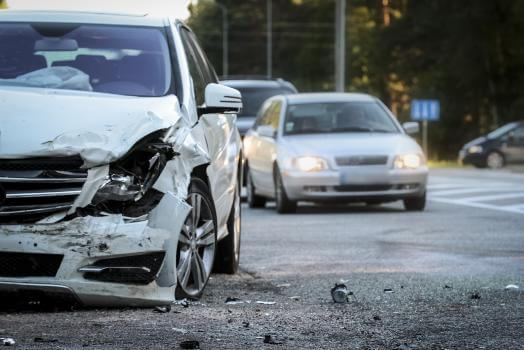

Compression Fracture Due to a Car Accident in Ontario, Canada
Steps to Prevent a Compression Fracture Due To a Car Accident in Ontario, Canada
Preventing compression fractures in car accidents involves taking certain precautions to reduce the risk of spinal injuries. While it is impossible to completely eliminate the risk of accidents, following these steps can help minimize the likelihood of sustaining a compression fracture:
- Use Seat Belts: Ensure that all occupants of the vehicle wear seat belts properly. Seat belts are designed to secure passengers in their seats and restrain them during collisions, reducing the risk of being thrown forward and impacting the dashboard or other hard surfaces.
- Install Airbags: Make sure your vehicle is equipped with functional airbags. Airbags are designed to deploy rapidly during a collision, providing a cushioning effect and reducing the force exerted on the occupants, particularly on the head and upper body.
- Adjust Headrests: Properly adjust the headrests in your vehicle. Headrests should be positioned at a height that aligns with the middle of the back of your head. This helps support the neck and head, minimizing the risk of whiplash injuries and potential compression fractures.
- Drive Responsibly: Adhere to traffic laws, obey speed limits, and avoid aggressive driving behaviours. Maintaining a safe driving distance from the vehicle in front of you can provide you with enough time to react and potentially prevent accidents.
- Avoid Distractions: Stay focused on the road while driving and avoid distractions such as texting, talking on the phone, eating, or engaging in other activities that divert your attention from driving. Distracted driving increases the risk of accidents and subsequent injuries.
- Observe Traffic Laws: Adhere to traffic laws, obey speed limits, and avoid aggressive driving behaviours. Maintain a safe driving distance from the vehicle in front of you to provide enough time to react and potentially prevent accidents.
- Ensure Vehicle Maintenance: Regularly maintain your vehicle to ensure it is in proper working condition. This includes checking brakes, tires, lights, and other essential components. Faulty brakes or worn-out tires can contribute to accidents, increasing the risk of injuries.
- Choose a Safe Vehicle: When purchasing a car, consider its safety features, such as advanced safety systems, reinforced frames, and crumple zones. Vehicles with high safety ratings provide additional protection in the event of a collision.
- Follow Defensive Driving Techniques: Practice defensive driving techniques, such as maintaining awareness of your surroundings, anticipating potential hazards, and being prepared to react appropriately. Defensive driving can help you avoid dangerous situations and reduce the risk of accidents.
- Wear Protective Gear for Sports: If you participate in sports activities with a risk of impact or falls, use appropriate protective gear such as helmets, knee pads, or back braces. These safety measures can help absorb impact forces and reduce the risk of spinal injuries.
Remember that while these steps can help reduce the risk of compression fractures in accidents, it is crucial to acknowledge that accidents can still occur despite precautions. If you are involved in an accident and suspect a compression fracture, seek immediate medical attention, even if you don’t immediately experience symptoms, as some injuries may not be immediately apparent.
Always prioritize your safety and the safety of others on the road, and follow the rules and regulations set forth by Ontario’s transportation authorities. It is advisable to consult with a personal injury lawyer to explore all available options for compensation.

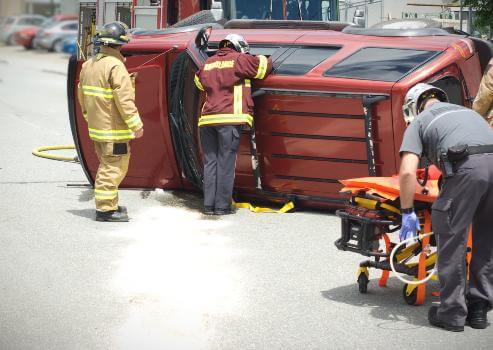

Car Accident Compression Fracture in Ontario, Canada
Compensation for Compression Fractures from a Car Accident in Ontario, Canada
In Ontario, if you sustain a compression fracture or any other injury due to a car accident caused by another party’s negligence, you may be eligible for compensation. Ontario has a no-fault insurance system that provides accident benefits to individuals involved in motor vehicle accidents, regardless of who is at fault. You may also be able to pursue a tort claim against the at-fault party for additional compensation.
So the compensation amount can be up to $90,000 based on the severity of the injury. If this is a long-term or permanent disability, the victim can get more compensation.
Compensation for a compression fracture resulting from a car accident in Ontario may be available through various avenues. Ontario has a combination of no-fault accident benefits and the possibility of pursuing a tort claim against the at-fault party.
Here’s an overview of the potential compensation available:
- Accident Benefits (No-Fault Insurance): Ontario’s no-fault insurance system provides accident benefits to individuals involved in motor vehicle accidents, regardless of fault. These benefits cover medical expenses, rehabilitation costs, income replacement, attendant care, and other related fees. To access accident benefits, you need to report the accident to your insurance company promptly and initiate the claims process. It’s essential to understand the specific accident benefit limits and requirements outlined in the Statutory Accident Benefits Schedule (SABS).
- Tort Claim: If another driver’s negligence caused the car accident and your compression fracture, you may be able to pursue a tort claim against the at-fault party. A tort claim seeks compensation beyond what is covered by accident benefits, including damages for pain and suffering, loss of enjoyment of life, loss of income, and future care costs. To pursue a tort claim, you must establish that the other driver’s negligence directly caused your injuries. It’s crucial to consult with a personal injury lawyer specializing in motor vehicle accidents in Ontario to evaluate the circumstances of your case and guide you through the legal process.
Determining the exact value of a compression fracture lawsuit in Ontario is challenging as it depends on various factors. The worth of the case is influenced by the severity of the injury, medical expenses, loss of income, pain and suffering, contributory negligence, and the quality of legal representation. Each case is unique, and the worth of a compression fracture lawsuit can vary significantly.
It’s important to note that Ontario has specific timelines and legal requirements for filing accident benefits and tort claims. It’s recommended to seek legal advice promptly to ensure compliance with these timelines and to protect your rights.
Every case is unique, and the compensation you receive will depend on the specific circumstances. Consulting with a qualified personal injury lawyer specializing in motor vehicle accidents in Ontario is crucial to understanding your rights, evaluating the potential compensation available, and navigating the legal process effectively.

InjuredInAnAccident.ca
, Ontario
Tel: (647) 952-4280

*The laws pertaining to automotive injuries are complex and are contsantly evolving. The information on this website was not written by legal professionals and should not be considered legal advise. Please contact a professional personal injury lawyer serving Ontario for the most up to date and accurate information.




